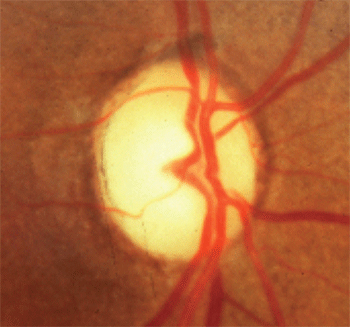 |
|
Even if current evidence on the association between the two is limited, assess all patients experiencing visual impairment symptoms during COVID-19. Photo: Joseph W. Sowka, OD. Click image to enlarge. |
Though impairments in taste and smell are commonly known effects of COVID infection, reduced visual acuity (VA) has been reported far less often. A recent systematic review and meta-analysis aimed to identify and describe the characteristics of the visual loss associated with COVID.
The study included articles reporting on vision loss development linked to laboratory-confirmed COVID-19 infection. Visual loss was defined according to the International Classification of Diseases as distance mild visual impairment: VA <0.5 but ≥0.3 using a decimal scale, distance moderate visual impairment: VA <0.3 but ≥0.1, distance severe visual impairment: VA <0.1 but ≥0.05, blindness: VA <0.05 and near visual impairment: VA <N6 at 40cm with existing correction.
After screening, the researchers selected 29 studies for inclusion: two cross-sectional studies, 24 case reports and three case series. A meta-analysis demonstrated that the pooled visual loss cumulative incidence in COVID-19 patients was 0.16. The quality rating of the cross-sectional studies was weak; the researchers believe that studies with larger sample sizes are needed for further investigation.
The team’s review found that the leading cause of visual loss across the studies was optic neuropathy. SARS-CoV-2 can affect the nervous system through different routes; it can enter the nervous system through the bloodstream by infecting the choroid plexus or meninges or spreading through the olfactory nerves. A mechanism of molecular mimicry, in which viral antigens induce an immune response against self-proteins, may also be responsible for tissue injury.
The researchers also proposed that COVID-19 may lead to various opportunistic infections. The altered immune response and the use of corticosteroids may increase the risk of superadded infections after a prolonged period in intensive care units. During COVID-19, cytokines such as IL-6, IL-10 and TNF-α are markedly higher, whereas T lymphocytes are much lower.
“COVID-19 might cause visual loss through several mechanisms,” the researchers wrote in their paper. “Therefore, it should be considered in patients who have recently developed visual loss, and clinicians should be aware of this uncommon event to avoid blindness in everyday clinical practice.”
Ripa M, Motta L, Shipa C, et al. “Vision loss” and COVID-19 infection: a systematic review and meta-analysis. Vision. 2022;5(4):60. |

